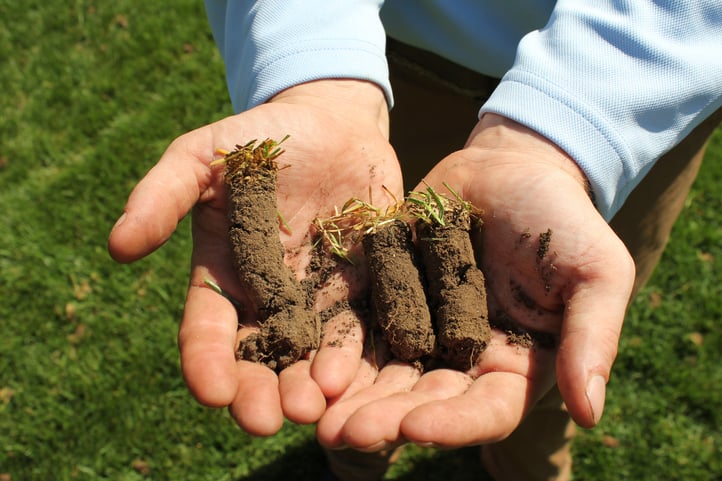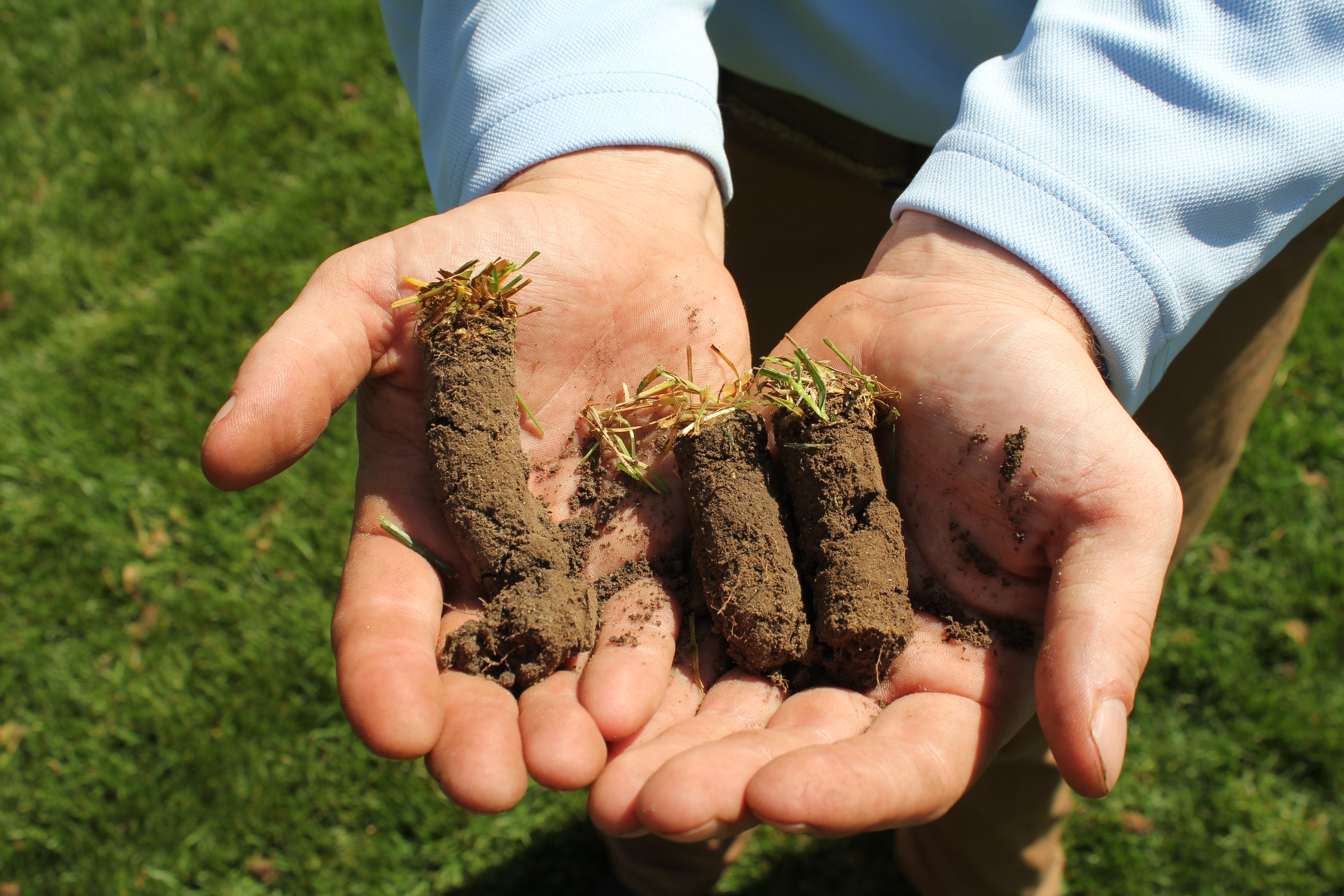
Maintaining a healthy lawn takes work and proper timing. Doing the right thing but at the wrong time can delay growth or even cause damage. The adage ‘too much of a good thing’ definitely holds true. There are a few tried and true maintenance tasks that can give your lawn a needed spring boost for fantastic summer growth. You can trust the experts at Nutri-Lawn Ottawa for professional advice.
Aeration is an important spring maintenance task. Aeration is the removal of plugs of soil in your lawn. This is done for a few reasons – to reduce soil compaction, improve water absorption, deal with thatch, and encourage deeper root growth. Homeowners typically want to combine aeration with fertilizer and overseeding.
May is the best time of year to aerate and there are a few reasons for this.
Soil temperature – Aeration is usually combined with overseeding and grass seed needs specific growing conditions for optimal germination. The soil temperature in spring can vary significantly from the air temperature. When the soil reaches a consistent 10°C to 15°C is the best time to plant grass seed. In spring, the soil is usually cooler than the air until the temperatures at night stay warm consistently. In March and April, though the soil may be soft enough to aerate, depending on the year, the grass seed won’t germinate.
Overseeding directly after aerating prevents weed growth in the new open spaces in your lawn.
Active growing season – Aeration is best done when the lawn is actively growing as this allows it to recover faster. The removed plugs absorb back into the lawn and the holes fill in faster in warmer temperatures with good rain. A good indicator is to wait until you’ve mowed the lawn a few times before aerating as this demonstrates that the grass is actively growing.
What Are The Dangers of Aerating Too Early?
Aeration can cause stress to a lawn’s root system, and a sudden late-spring cold snap would cause additional stress, potentially delaying growth.
Aerating when the soil is too wet will minimize the effect if the soil clumps together or is overly muddy.
How Do You Tell If Your Lawn Needs Aerating?
Does water pool on your lawn during rain storms? This may indicate that the soil is too compacted and drainage is affected. Aeration can help. Compacted soil is often preferred by a variety of weeds.
How thick is the thatch on your lawn? Thatch is a layer of dead organic material that sits on top of the soil. A thin layer of thatch is beneficial as it breaks down and provides needed nutrients to the soil. Thatch that is an inch thick or more will prevent water, light, and nutrients from reaching the soil. There are a few ways to address a thatch problem, but aeration causes the least damage.
Has it been more than two or three years since your lawn was aerated? If it has, there’s a good chance that your lawn would benefit from aeration.
Ask the lawn care experts at Nutri-Lawn Ottawa about aeration and how to give your lawn the best start for 2017. Get a free consultation on how to improve the look and feel of your lawn. Request a free quote from Nutri-Lawn Ottawa today!






